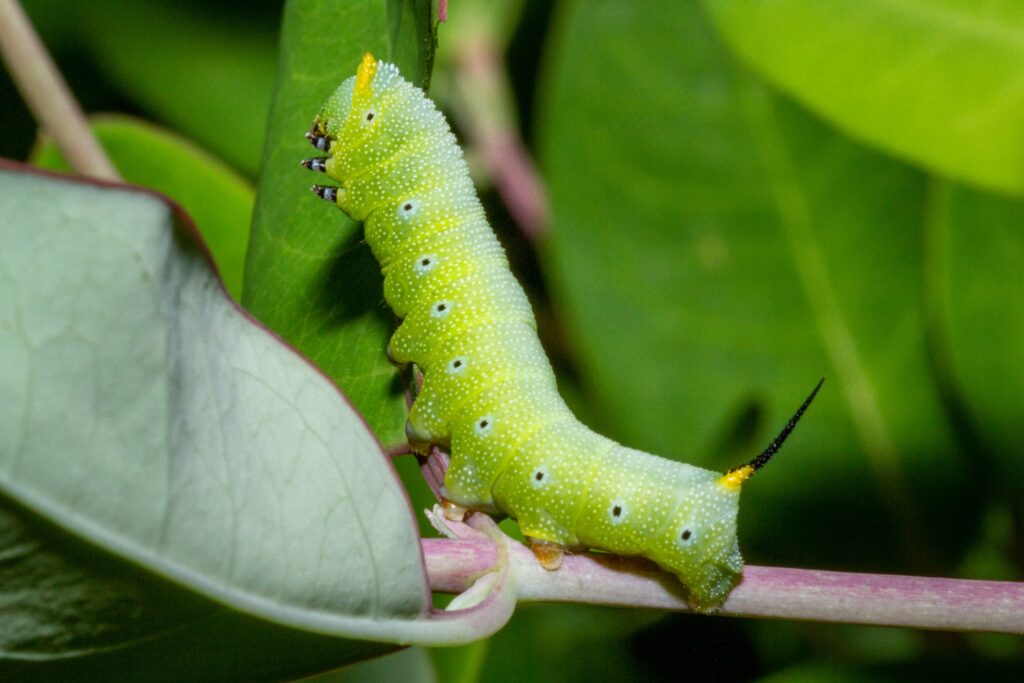Garden cutworms, also known as black cutworms or Agrotis ipsilon, are a common pest in gardens and agricultural fields across North America. These caterpillars can cause significant damage to a wide range of garden plants, including vegetables, flowers, and ornamental plants. In this article, we’ll take a closer look at garden cutworms, their behavior, and how to control them.
Appearance and Behavior
Garden cutworms are typically brown or gray in color and can be up to 2 inches long. They have a soft, cylindrical body and are often found curled up in a C-shape. These caterpillars get their name from their behavior of “cutting” through young plants at the soil level, causing them to wilt and die. This cutting behavior is most often seen during the early part of the growing season, when young plants are most vulnerable
Garden cutworms are most active at night and will often hide during the day in the soil or under debris. They feed on a wide range of plant species, including corn, tomatoes, peppers, lettuce, and many others. Even when garden cutworms are dead, they can still cause damage to your plants. This is because their presence on the plant can attract other pests, such as scavenging insects or rodents, that can also feed on the plant and cause additional damage. Additionally, the decomposing bodies of dead cutworms can release nutrients back into the soil, which can lead to an increase in soil-borne diseases and pests. Therefore, it’s important to dispose of dead cutworms away from your garden and to take steps to prevent other pests from being attracted to the area.

Control Methods
There are several methods you can use to control garden cutworms and prevent damage to your plants:
- Handpicking: One of the simplest and most effective methods of control is to physically remove the caterpillars from your plants. This can be done by handpicking them off the plant and dropping them into a bucket of soapy water.
- Barriers: Another option is to create physical barriers around your plants to prevent the cutworms from reaching them. This can be done by placing collars made from cardboard or plastic around the base of the plant, or by using row covers or other types of netting.
- Insecticides: If handpicking and barriers aren’t effective, you can also use insecticides to control garden cutworms. There are several types of insecticides available, including those made from natural ingredients like neem oil or pyrethrin, as well as synthetic options like carbaryl or permethrin. Be sure to follow the instructions on the label carefully when using insecticides, and avoid applying them during times when beneficial insects like bees are active.
- Chickens: Garden cutworms can be a great source of protein for chickens, and many chicken owners choose to feed them to their birds. Chickens are omnivores and will eat a wide variety of insects, including cutworms. In fact, many people find that their chickens will actively seek out and eat cutworms if they are present in the garden.

Feeding cutworms to chickens can have several benefits. For one, it can help supplement their diet with additional protein, which is important for healthy egg production and growth. Additionally, feeding chickens insects can help reduce the need for commercial feed, which can be expensive and often contains additives or fillers.
Before feeding cutworms to your chickens, it’s important to ensure that they are safe to eat. Cutworms can sometimes feed on plants that have been treated with pesticides, which can be harmful to chickens if ingested. It’s best to avoid feeding cutworms that have been found on plants that have been treated with any kind of chemical.
Prevention
Preventing garden cutworms from infesting your garden in the first place is often the most effective method of control. Here are some tips to prevent cutworms from damaging your plants:
- Till your garden in the fall to expose cutworms to predators and harsh winter conditions.
- Remove any debris from your garden in the fall and spring to eliminate hiding places for cutworms.
- Avoid planting young plants in areas where cutworms have been a problem in the past.
- Keep your garden free from weeds, as they can provide cover for cutworms.
- Consider using beneficial insects like parasitic wasps or nematodes to control cutworm populations.
Garden cutworms are a common pest in many gardens and can cause significant damage to your plants. However, with the right control methods and prevention strategies, you can protect your plants from these hungry caterpillars and enjoy a healthy, thriving garden.
